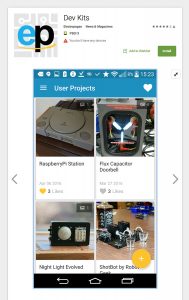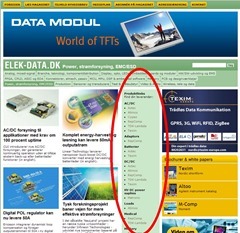PCIM Europe 2017 issues call for papers
The organisers of PCIM Europe’s conference have issued a call for papers. PCIM Europe is the leading event for the entire power electronics industry and its fields of application, usually characterized by their unique combination of a practise-oriented conference and exhibition.
PCIM will be held from the 16th-18th May 2017 in Nuremberg, Germany, aiming to demonstrate varied expertise, and provide the opportunity to exchange specialist knowledge, informing an international audience about the latest results and developments in the field of power electronics.
The conference will be held in English, covering a wide range of topics including recent developments on power semiconductors, passive components, thermal management products, energy storage, sensors and new materials, as well as systems. Drives in automation will continue to be a subject in 2017, providing experts with inspiring and wide-ranging subjects in the field of power electronics.
The ‘Call for Papers’ gives the go-ahead for experts from industry and academia to submit their papers on power electronics, and allow speakers to have the opportunity to present their latest results and developments within a lecture or poster presentation. With the deadline on 18th October 2016, experts should be quick to submit their papers, as the more fortunate selected papers will be included in the official PCIM Europe proceedings, as well as in the scientific databases of IEEExplore, Scopus, Compendex and IET Inspec Direct.
Outstanding papers will be recognised with awards; the winner of the ‘Best Paper Award’ will receive 1,000 Euros and the chance to participate at the PCIM Asia 2018 Conference in Shanghai. Also, three ‘Young Engineer Award’ worth 1,000 Euro each are available, giving outstanding writers no older than 35 the opportunity to be awarded at the opening ceremony of the PCIM Europe conference on the 16th May 2017.
In memory of Tommy Jägermo

When we heard that Tommy had died as a result of his diabetes, we were shocked. His energy and enthusiasm made him one of those people that you just always thought would be around, even though he did suffer from ill health. Losing Tommy, particularly at just 68 years old, makes the industry much poorer. RIP Tommy.
How to win at Facebook marketing…even though reach and referral traffic is at an all-time low thanks to a new update
On the 29th June, Facebook announced another tweak to its News Feed that effects which stories and updates users get to see. Facebook’s engineering director Lars Backstrom has written on Facebook’s blog, “We’ve heard from our community that people are still worried about missing important updates from the friends…so the things posted by the friends you care about are higher up in your News Feed”. Whilst this might be an improvement for personal use, how does this change affect business users?
The Shareability Factor
This update is the second in 18 months to affect the News Feed reach and referral traffic which has led to a decline in visibility for Business Pages. You can read our initial post from May 2016 about B2B Facebook Marketing here. So, what does this new update mean in reality? Facebook always encourages its business users to post relevant and engaging content that will attract their target audience. According to Facebook, if the majority of your referral traffic is from people sharing your content and their friends liking and commenting then your business will see less of an impact than if your page gets most of its traffic directly from your page posts alone.
Pay to Play
If you post regularly to Facebook you need to carefully consider your post content to ensure that its shareable and is seen as having value, not only to your page followers but to their followers too. If you’re not already on board with content marketing then you can get started here. Our B2B Facebook Marketing report showed us that businesses cannot rely on organic traffic alone, so if you’re already using Facebook Ads as part of your online marketing strategy then you may need to consider adjusting your tactics and reconsidering not only what content you post but whether you choose to use Facebook’s ‘Promote Page’ Ad’s or ‘Boost Post’ Ad’s. If you are not currently advertising, this update suggests that carefully curating your page posts will only get you so far, so adopting a paid approach is the only way to guarantee visibility.
At Napier, we undertook our own 3-month research project at the beginning of the year to monitor the success of Facebook ad’s and how their use affected brand visibility and engagement. This research was invaluable as we used real data which means greater insight.
Bits and Chips Smart System Event 2016

Bits and Chips are the leading new and opinion magazine for high tech industry owned by Techwatch, with their main focus in the new items on the influence of technology. Bits and Chips magazine has a great reputation within the high tech industry in Belgium and Netherlands, presenting them as a reliable and exceptional source to help provide information for this event.
Bits and Chips Smart System event, is an easy place for experts in the industry including researchers, designers and engineers to meet, share their knowledge and expertise with each other. This amazing event allows experts of all fields within the high tech industry to contribute and help each other with their knowledge, whilst also establishing and reinforcing their tactical partnerships with each other.
You’ve Won The Customer – Is Your Job as a Marketer Done?
Your hard work has paid off and your marketing efforts have won you business but now is most definitely not the time to take your foot off the gas. Many companies use retention strategies as each customer represents an opportunity to make a customer loyal for life. If this sounds a lot like hard work then you’d be wrong – here’s some simple tips on why marketing to your existing customers is so important. If you're looking for inspiration, read our recent content marketing blog post.Delight your customers
At Napier, we are big fans of the Inbound Marketing methodology, where you attract visitors to your business, convert them to leads with your outstanding content and then close them as customers. But the process does not stop there – why stop the momentum? Don’t forget about marketing to your existing customers - ‘Delight’ them and ensure they stay a customer and even more powerful than that, allow them to become a brand advocate by delivering more for less with a great content strategy
Tools for delight
By now you are well on your way to mastering content marketing, you’re doing something right if you’re moving visitors through the buyer’s journey. So what does delighting customers look like? Hopefully you will have built up a profile of your customer types or personas through the purchasing process but now it’s time to find out what they need after they have made a purchase. The best way to do this is to ask. You can use online survey’s or voting buttons in targeted email campaigns to get these answers and find out what gets them clicking on your online content. If you’re using a marketing automation platform such as HubSpot you can employ the use of smart calls to action on landing pages that present users with offers that change based upon their buyer persona.
Harness Social Media
If you’re not quite there yet then don’t forget you can also utilise social media. Monitor what customers are saying about your brand, take on board the good and the bad and create content and take action accordingly. A good example might be a customer complaint about installing a product, they might take to social media to complain they found it tough. Rather than seeing this as negative, take it on board...if you find this is a trend then consider creating instructional video’s. This will not only delight the customer but can also be used as marketing content that is easily shareable online.
Buyers are even more empowered today, information is everywhere and is much easier to find, which means retaining customers can be tougher. In order to stay ahead you need to deliver the goods, provide excellent customer service AND stay top of mind for all the right reasons. A well thought out content and email marketing strategy delivered through marketing automation will ensure you keep one step ahead of the competition, delight your customers and deliver more with less effort from your marketing team. it's win-win all round!
ETN offers range of marketing opportunities in Finland
We recently reported that Elektroniikkalehti had rebranded to ETN, making things a lot easier for those of us with limited Finnish to discuss this title. The publication has also been working to offer a wider range of ways to reach the Finnish market. For companies wanting editorial-like promotion with complete control, ETN is offering native advertising: the digital equivalent of the good old advertorial. Interestingly the publication has also built an email list that can be rented. Although it consists of only 2000 contacts, the Finnish market isn't as big as many other European markets, and this must represent the largest rentable list of Finnish electronics engineers. For more information, contact Napier or ETN.
Bits and Chips celebrates success of ASML

Bits and Chips have decided to publish a follow up special issue dedicated to ASML, to celebrate the major milestone they have achieved in semiconductor history. This special issue is to be published on the 16th December 2016 and will focus on a series of interviews and technology backgrounders.
With a circulation of 20,000 copies to be published, this special issue is not to missed. It will reflect extensively on this technology milestone, celebrating this great accomplishment. ASML’s sales are growing due to the system enhancements that are part of the holistic lithography suite. This has helped these additions become a must rather than an attractive option, proving ASML continues to grow as a company, suggesting they will continue to provide further developments.
Striking a balance between "owning" and "renting" contacts
Marketing has changed dramatically over recent years, as the cost of reaching contacts you have in your database approaches zero. Twenty years ago, things were different: it was expensive to reach contacts in your database as postal direct mail, telemarketing and sending sales people were all expensive pursuits. Databases could become out of date before marketing teams had sufficient budget to reach contacts and therefore accessing third-party relationships (for example mailing lists, readers of publications and trade show visitors) was a cornerstone of marketing practice.
Today there are even more places where you can take advantage of another company's relationships: social media platforms such as Facebook and LinkedIn have gigantic audiences and are more than happy to take your advertising money. At the same time it's easier than ever to reach people on your database. Direct email is fast, cheap and simple, while marketing automation and modern CRM tools provide the intelligence to ensure communications can be highly targeted (although not every email marketer has got there!).
Many people characterize the situation as a conflict between "owning" an audience vs. "renting" the audience, as if the choice is mutually exclusive. If your relationship is directly with the contact, then you "own" them, while using third party platforms or publications to reach people is "renting", and you should pick one or the other. We'll see this is a very misguided approach.
It's pretty clear that B2B marketing budgets are moving towards ownership of contacts: while marketing automation tool vendors prosper, we're seeing trade publications struggle. To be fair, most social media budgets are growing, but this is probably more due to the newness of the medium, and often the budget is growing at the expense of other "rented" sources of contacts from trade shows to publications. At Napier, we've seen the trend and are actively helping clients develop their marketing automation and Inbound marketing strategies that make use of, or build, an "owned" audience.
Despite the excitement, attractive economics and shiny new marketing technology toys, we've not given up on other approaches. The ability to build a database of your company's fans is great, but it's important to remember that there are many potential customers who haven't yet graduated to fandom, and they're much less likely to give up their details for your white papers or email newsletters. These potential customers represent the biggest opportunity for growth for many companies. If you focus on only the contacts in your database, you'll be talking in a private bubble. Yes, the vast majority of contacts will be interested, and they'll click on your email links, but many of the were going to buy your product or service anyway!
Our approach looks at three distinct stages of the marketing funnel. At the bottom we help clients generate engagement with the contacts on the database. But before you can gather contacts and generate leads that can be engaged, you need to generate awareness. Potential customers with limited awareness of your company, products or their benefits are not going to be on your databases, and so you need to reach them on platforms like publications' websites, newsletters and social media.
The key to effective budgeting is understanding your marketing funnel and addressing the weaknesses. Not enough leads? You need to focus on the top-of-the-funnel awareness and lead generation activities. If, however, you've got a lot of great leads who are not yet customers then your time and money should focus on engaging them with marketing automation and other direct tactics. Understanding the situation and getting the budget right means you're then in a great position to move prospects through your sales funnel. At this stage, it's all about the speed that you can convert awareness into opportunity. Increasing the velocity of prospects through the funnel is one of the core competencies of Napier, although the explanation of how we do it will need another blog post.
Electropages launches Development Kit App for Android

Engineers are faced with an incredibly diverse number of Dev Kits from semiconductor companies, component suppliers and distribution companies. There are plenty of statistics that clearly indicate just how rapidly this market sector is expanding and industry analysts ABI Research reckon the installed base of development kits will reach 21 million by the end of the decade, and currently almost half of all electronics designs are facilitated by use of development kits.
Craig Dyball, publisher and founder of Electropages told us:
“Engineers have a mind-boggling choice of Dev Kits, whether it’s a member of the Arduino family, a Raspberry Pi or an Intel Galileo or one of the many thousands available. Consequently informed comment via independent journalists is an unbiased way potential users and providers of Dev Kits can research the market and this is precisely why the Electropages Dev Kit app has been created.”
It's great to see Electropages continue to invest in tools for mobile platforms as well as their conventional online publishing activities. The number of development kits is growing at an incredible rate as manufacturers recognise their value and also build kits to address specific amrkets such as makers. Many engineers are going to find this tool a valuable aid to selecting the right kit for their needs.
Napier Featured in Apprenticeship Service Video
Recently the Napier office was visited by a filmaker for the National Apprenticeship service. Watch the viedeo to learn more about our apprenticeship scheme and our award-winning Freya!
How can brands differentiate themselves in the World of IoT?
The Internet of Things (IoT) or Internet of Everything, as is probably now more appropriate, was a phrase coined by Kevin Ashton back in 1999, when he was working in marketing for Procter & Gamble. Despite its inauspicious beginnings in the cosmetics industry, by the late 00's onwards, everything IoT was cool.
Connecting devices to the internet is now the norm, with many new connected products being released every day. According to Gartner, in just 4 years’ time we could well see 26 billion IoT devices in existence, that's 3.3 devices per person on the planet! Perhaps this is why the IoT honeymoon is over: today simply announcing another device with connectivity doesn’t guarantee success, as FitBit found out with their recent launch at CES, where new fitness tracker was greeted by a fall in their stock price.
With demands and expectation high, how can B2B brands be sure they can deliver and differentiate in the crowded market that is the IoT?
A Proliferation of Acronyms
As everyone began using the term IoT, companies found that simply slapping the term on a new product did nothing to differentiate it. So we’ve seen almost every sector adapting the IoT moniker for their industry with their own branding with names such as IoHT (Internet of Healthcare Things) and IoGT (Internet of Green Things). We’ve even heard security companies try to sell their products with the rather scary IoTTK (Internet of Things That Kill)!
Where are we now?
The EIoT - The Enterprise Internet of Things (this is the closest we could find to Internet of B2B things!) is set to account for 40% or 9.1 billion devices by 2019 as reported by Business Insider.
There are still people questioning the rush to connect everything. There was the great IP address shortage that never seemed to cause problems (NAT was always going to solve that one), the political battles to make one standard to rule all others (actually it looks like there will be a few different standards that each serve different applications) and the ever-present fear of the risk of software failure (being connected makes updates possible that can fix bugs before the user is even aware they are present).
So the IoT is here to stay, and perhaps this is the problem.
Why IoT is no longer a Compelling Brand
Despite all the branding efforts, using IoT or a version of the term, is fast becoming a way to make journalists start to yawn and look for excuses to finish the briefing. This is particularly true in the B2B world, where buyers and journalists are typically much more technically-savvy than consumers.
With the inevitable progress towards connecting almost everything (most likely including the often maligned internet fridge), why does IoT induce such apathy and disinterest?
The reality is that IoT has already hit maturity, and connectivity is no longer a differentiator or benefit for many products: it’s the entry ticket to be considered. Marketers have to understand that trendy terms can only be trendy for a period of time, and the rapid progression of technology means that it has taken only a few years from the first wave of IoT devices to connectivity becoming a commodity.
The reality is that the internet of things is now just the internet. It’s no longer cool for data to be transmitted automatically, it’s what is expected. Just as a website redesign is no longer a reason to issue a press release, marketers must understand that slapping the IoT brand on a product is not a marketing strategy. To be successful, they must communicate the benefits of their product that are unique and different. Back to good old marketing, I guess!
Call for Papers - E&E Kompendium
Authors have been invited to submit proposals for the E&E Kompendium 2017, the annual reference book for German electronics engineers. Submissions are invited on a wide range of topics, including
- The main "trend topic" - Automotive
- Active components and microcontrollers
- Passive components
- Embedded Systems
- Design tools and software
- Optoelectronics and displays
- Electromechanics and connectors
- Power supply and power electronics
- Measurement technology and EMC
- Manufacturing
- Distribution and services
The Kompendium has a total circulation of 16.900: 7.900 print and 9.000 electronic copies. The deadline for abstracts is 14th March 2016, and submissions can be made by email to: eue.redaktion@publish-industry.net or the online form.
Data Protection 'Safe Harbor' Agreement Rejected, January 2016 Datageddon Looms
The European Court of Justice has struck down the Safe Harbor agreement that allows organisations to transfer data from the EU to the USA, a ruling that follows the US authorities’ mass surveillance activities of European citizens, leaked by Edward Snowden back in 2013.
Established in November 2000, Safe Harbor is a policy agreement between the United States Department of Commerce and the European Union, which regulates the way US companies transfer and handle the personal data of European individuals. Simply put, it allows American companies to transfer personal data from Europe to the USA easily, without breeching European law.
What does this mean for US companies?
While the collapse of this transatlantic pact is a victory to European privacy advocates, the decision to make the safe harbour agreement invalid has huge implications on US companies, particularly in the technology, telecoms and cloud space.
With as many as 4,500 companies relying on this transatlantic transfer of personal data, the ruling means that these companies potentially have to restructure how they manage, store and use their data in Europe, a task that will require a lot of time and money. With marketing generating much of this data, it’s a worrying time for marketers who work with American companies.
Fortunately there is no need to panic: at least not yet! The Article 29 Working Party, Europe’s independent advisory body on data protection, has given the US government and European Commission until January to negotiate new safe harbour agreements. If these negotiations aren't successful, Silicon Valley could see some serious legal battles.
Since negotiators have failed to reach a new deal despite two years of discussions, these new time constraints place them under increased pressure. The threat is very real as European privacy regulators could begin issuing fines and banning overseas data transfers in the New Year, if a new agreement has not been reached.
Napier's Recent Apprentice Gets Through First Stage of the National Apprenticeship Awards

If Freya is successful in this stage, she will become a regional finalist for the South East.
Following the successful completion of her apprenticeship earlier this month, Freya has joined the Napier team on a permanent basis as a marketing specialist, and continues to support the team in a range of areas including ad production management, media buying, email marketing and video editing. She will begin a CIM L4 Certificate in Professional Marketing in September.
Congratulations and good luck with the next stage Freya!
Napier Appoints Recent Apprentice as Marketing Specialist

Since starting Napier’s apprenticeship programme in July 2014, Freya has brought bags of enthusiasm and fresh new ideas to the team, and has gained practical industry experience whilst working towards a level 2 NVQ certificate in Marketing at Chichester College. Following the successful completion of this certificate, she is currently undertaking a CIM L4 Certificate in Professional Marketing.
Freya will continue to support the team in a variety of areas, including email marketing, ad production management, media buying and video editing.
Introducing the new electronics Spanish magazine

More specifically, the magazine is geared towards those who work in Research and Development labs and Technical Departments of small and medium sized companies, as well as those still attending courses in electronics and computer science, from high school to university students, and their teachers.
Call for papers – Smart Systems Integration 2015
The organisers of Smart Systems Integration (SSI) 2015, which will be held in Copenhagen, Denmark from 11th to 12th March 2015, have issued a call for papers. Submissions are invited in a variety of categories. Applications that can be addressed in papers include:
- Smart mobility
- Smart health
- Smart energy
- Smart society
- Smart production
The other categories for papers include hardware/technologies, software for smart integrated systems and smart networking.
Danish title redesigns to provide more options for advertisers
Danish title Elektronik & Data *www.elek-data.dk) has redesigned it’s online presence, providing more opportunities for advertisers. Banner sizes have been significantly increase and there is now an opportunity to place white papers and brochures on the home page.

Readers haven’t been forgotten in the new design – the layout fits in a lot of information in an attractive and easy-to-read layout.
It’s good to see publishers looking for innovative ways to drive revenue: whilst the product links are not a dramatic technical advance, it’s a great way to offer brands cost-effective exposure, and also enriches the editorial with links to relevant suppliers.
Bits&Chips to launch new show in 2014: Smart Systems

Marcus Plantenberg appointed by PSD as sales director for DACH


It's good to see PSD putting more focus on Europe, and I expect that this move will result in an increase in their revenue from the important DACH region.
Call for papers - DATE 2015
The organisers of DATE 2015, which will take place from 9th to 13th March 2015 at Alpexpo in Grenoble, France, have issued a call for papers.
DATE addresses all aspects of technologies for electronic and embedded system engineering, covering the design process, test, and automation tools, and includes both hardware and embedded software design. The conference is arranged into four tracks:
D – Design Methods & Tools
A – Application Design
T – Test and Robustness
E – Embedded Systems Software
Submissions are invited for standard oral presentation and interactive presentation, as well as for Special Sessions (i.e. panels, hot-topic sessions and embedded tutorials to highlight and inform about special-interest and emerging topics), Monday Tutorials, Friday Workshops amd the Special Days on “Designing Electronics for the Internet of Things” and “Designing Electronics for Medical Applications”.
European Court of Justice makes browsing the internet legal
In a decision laced with a surprising amount of common sense, the European Court of Justice (ECJ) has ruled that internet users don't break copyright law when browsing the web [see note]! This is the result of a four year battle, where the Newspaper Licencing Authority wanted to demand that some users pay a licence to be able to browse the open websites of UK-based newspapers.
Perhaps the legal battle shouldn't be too much of a surprise. It's long been the case that accessing some illicit material on the internet will land you in court with a charge of making a copy of the content, and the NLA does have a reputation of coming up with "creative" ways to try to increase its revenue. But it's clear that any decision other than this one would have had ramifications that would make the controversial "right to be forgotten" appear to be a minor issue.
The PRCA deserves huge credit for their work in getting this judgement. They've invested a huge amount of time and money to help agencies and clients avoid the need to have to pay for a licence to simply browse the newspaper sites that are covering them. Whilst it would seem obvious that there was no alternative but for the court to rule in this way, the reality is that to get to this point took a huge amount of time and money and the PRCA should be applauded for their tenacity and success.
Note: we'd love to route you to the Guardian story about this decision, but the lovely people at the NLA have said that they want to charge us to do it. So we've had to take the link away (and the traffic that would increase the Guardian's revenue has gone too).
New publication for the Russian market

The publication will be primarily digital, with 7000 subscribers receiving electronic copies of NPI. The publishers also plan to distribute 1500 printed copies of each issue at trade fairs and conferences.
As with IEN Europe, the publication will address a broad range of engineering topics, including electronics, automation, production and maintenance.
It's good to see a new publication launch in Russia, where the opportunity for many of our clients isn't matched by the availability of good publications. It will be interesting to see whether the digital distribution is an approach that works with the Russian market: typically digital magazines still have significantly lower readership than print. With the limited number of high-quality, local-language publications, however, we'd expect that NPI will be a success, and an important way to reach engineers in this country.
Elektroniktidningen to handle advertising direct

Bits&Chips Smart Systems 2014
On 19 and 20 November 2014 the first edition of the exhibition and conference Bits&Chips Smart Systems will take place. This new event is a combination of Techwatch’s established Dutch embedded and hardware events. Bits&Chips Smart Systems targets all industries and disciplines involved in the development and production of smart systems in the Netherlands, Belgium and Germany.
Bits&Chips Smart Systems want to bring together all the parties who are working on the development of smart information systems, from smart pills to square kilometer arrays, from clever lighting to advanced diagnostic equipment or production machinery.
The conference will focus on academia, researchers, designers, engineers, and technical management. The development of networked technical information systems, from hardware to software, from antenna to system, from sensor to actuator, is central.

